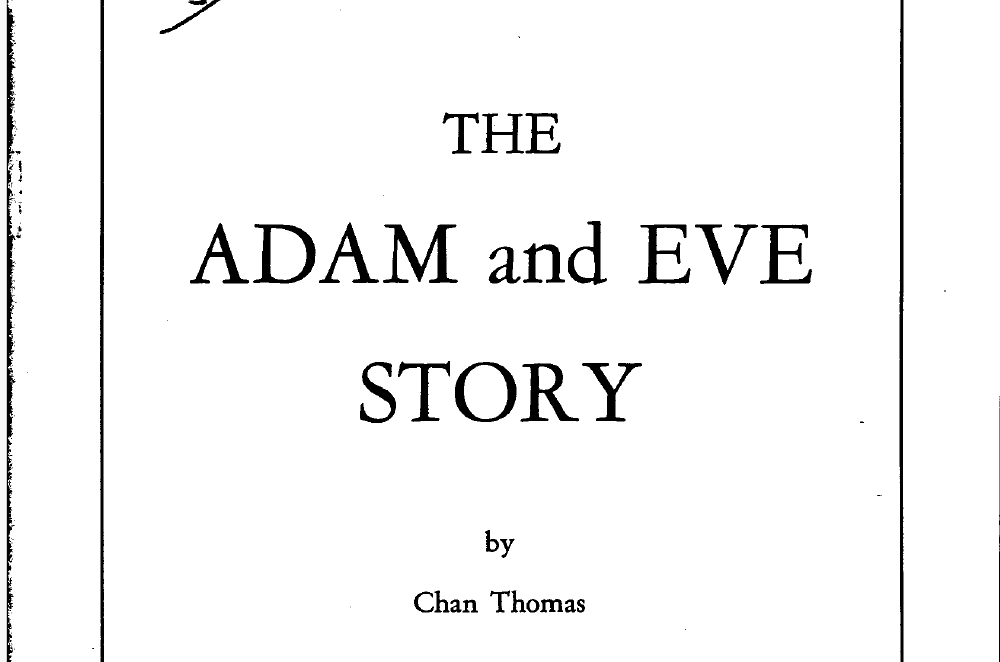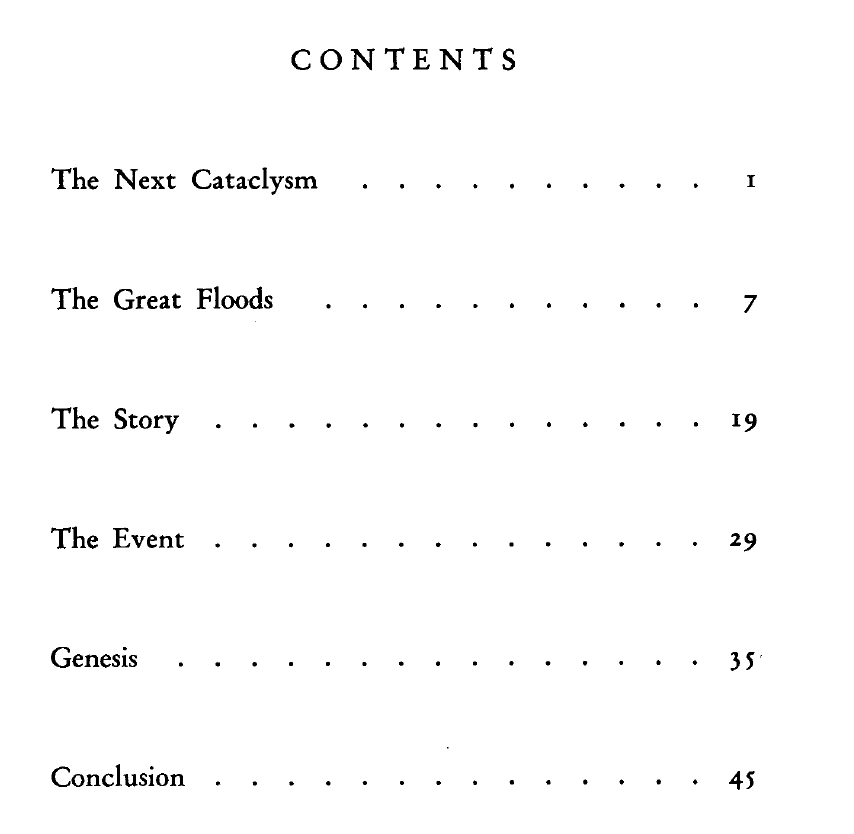What if we’re truly not the first human civilization? What if, before us, multiple cycles of human societies rose and fell, leaving only scattered remnants and cryptic warnings that we fail to notice? These questions have intrigued me since before I became a history student, aligning with the spirit of a popular Croatian show called Na rubu znanosti (On the Edge of Science). The book The Adam and Eve Story by Chan Thomas inspired me to explore these speculations in more depth. In the following text, I will briefly introduce some of the key ideas presented in that work.
Chan Thomas and The Adam and Eve Story
Chan Thomas, the author of The Adam and Eve Story, was a scientist and researcher who explored controversial theories about cataclysmic events in Earth’s history. His work proposed that cycles of catastrophic natural disasters, such as pole shifts, have periodically wiped out advanced civilizations, resetting human progress.

The book was initially published in the 1960s, but shortly after its release, it attracted the attention of the CIA. The agency classified much of the content, reportedly due to the speculative nature of the material and its potential implications. For decades, the full text remained inaccessible to the public, sparking curiosity and conspiracy theories.
In 2013, a heavily redacted version of the book was declassified and released by the CIA. This version, stripped of significant portions of the original content, is still available for download from the CIA’s official website. You can find it here.
A Brief Summary of the Book
In this chapter, we will summarize and explore some of the most fascinating claims and ideas presented in The Adam and Eve Story by Chan Thomas. This controversial work delves into cataclysmic cycles of destruction that, according to the author, have repeatedly erased civilizations throughout Earth’s history. From scientific speculations on pole shifts to philosophical reflections on human resilience, the book paints a compelling picture of humanity’s potential vulnerability to forces far beyond our control. Below, we outline the key themes and concepts discussed in this work.

Cataclysmic Pole Shifts
One of the core premises of the book is the idea that Earth’s poles periodically shift, leading to catastrophic natural disasters. Thomas theorizes that these shifts can occur suddenly, causing massive tsunamis, earthquakes, and volcanic eruptions that wipe out entire civilizations. He describes this process as a recurring event in Earth’s history, supported by evidence from ancient myths, geological anomalies, and fossil records. The author contends that such an event is not just a relic of the past but a looming threat to modern civilization.
Evidence of Lost Civilizations
Thomas explores the possibility that advanced civilizations existed long before recorded history but were obliterated by these cataclysmic events. He points to archaeological findings, such as unexplained structures and artifacts, as potential remnants of these forgotten societies. The book also delves into the possibility that these civilizations left behind warnings encoded in myths and ancient texts, which we have yet to fully understand or interpret.
The Biblical Connection
A significant portion of the book draws parallels between ancient religious texts, particularly the Bible, and the cataclysmic events Thomas describes. He reinterprets stories such as Noah’s Ark and the destruction of Sodom and Gomorrah as allegories for these massive natural disasters. According to Thomas, these tales are not merely spiritual metaphors but encoded messages from past civilizations attempting to warn future generations of the cyclical nature of such events.
Human Resilience and Rebirth
Despite the grim subject matter, Thomas emphasizes the resilience of humanity in the face of these disasters. He discusses how survivors of past cataclysms rebuilt civilization from scratch, often preserving fragments of lost knowledge. This theme of rebirth and renewal runs throughout the book, offering a glimmer of hope amid the dire predictions.
Modern Implications and Warnings
In the final sections, Thomas turns his attention to the present and future. He warns that modern society is ill-prepared for such a cataclysm and that our technological advancements may not be enough to protect us. The author urges humanity to heed the lessons of the past and prepare for the possibility of future pole shifts. His writing challenges readers to consider their place in the vast cycles of Earth’s history and the fragility of human civilization.
Alternative Interpretations of the Bible and the Reconstruction of Genesis
This chapter explores Chan Thomas’s claims about the Book of Genesis, the role of Ezra, and his alternative understanding of the story of Adam and Eve. Thomas reexamines these biblical texts and myths, suggesting they may hold encoded knowledge about humanity’s origins and past civilizations.
Ezra and the Editing of Genesis
Thomas argues that Ezra, a Jewish scribe, played a significant role in reorganizing the Book of Genesis during the Babylonian exile. He claims that Ezra collected various oral and written traditions and restructured them into a cohesive narrative. According to Thomas, this process likely simplified or altered older stories, turning them into a theological framework that served the exiled Jewish population. This editing, he suggests, may have shifted or obscured details of the original stories, particularly regarding creation and humanity’s early history.
Adam and Eve’s Relationship
One of Thomas’s more controversial ideas is that Eve might have been Adam’s daughter rather than his wife. He bases this claim on his interpretation of pre-biblical myths and the symbolic nature of ancient storytelling. By presenting Eve as Adam’s daughter, Thomas believes the narrative reflects themes of cyclical creation and destruction, where humanity is reborn after catastrophic events. This reinterpretation of their relationship ties into his broader theory of recurring resets in human civilization.
Language Before the Flood
Thomas discusses the possibility of a universal language spoken by pre-flood civilizations. He suggests that this ancient language, lost during a global cataclysm, was likely incomprehensible to post-flood societies. This universal language, Thomas speculates, may have conveyed complex ideas or advanced concepts no longer accessible to modern humans.
The Story of Humanity’s Creation
Thomas interprets the Adam and Eve story as a symbolic representation of humanity’s origins following a catastrophic event. He suggests that the expulsion from Eden marks humanity’s transition from a state of balance to one of survival and rebuilding. For him, this story is not unique but part of a recurring pattern where civilizations rise and fall due to natural disasters, leaving only fragments of their existence behind.
Ancient Myths as Clues
Thomas views the Genesis narrative as one of many ancient stories that preserve knowledge from past civilizations. He draws comparisons with other myths, such as those from Mesopotamia, to argue that these tales hold clues about humanity’s shared past. According to him, these myths contain fragmented records of catastrophic events and serve as a reminder of humanity’s fragile place in history.
Conclusion
I strongly recommend that you read The Adam and Eve Story and form your own opinion about it. From my perspective as a trained historian, this book undoubtedly resides on the edge of science and cannot be treated as factual evidence, which it clearly is not. However, the story of its censorship and nearly 50-year ban adds an undeniable layer of intrigue, suggesting that not everything within it is entirely fabricated. Ultimately, you will come to your own conclusions, and the times we live in—filled with surprises almost every day—may offer new insights into the questions it raises.
Historical Challenge: Can You Conquer the Past?
Answer more than 18 questions correctly, and you will win a copy of History Chronicles Magazine Vol 1! Take our interactive history quiz now and put your knowledge to the test!

